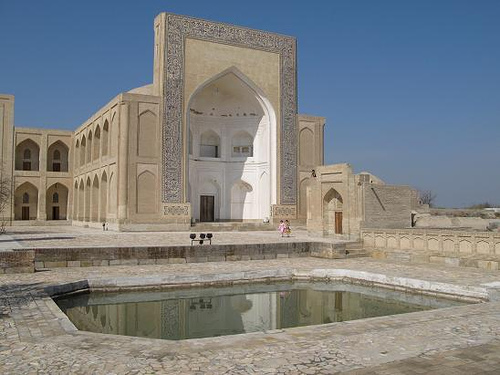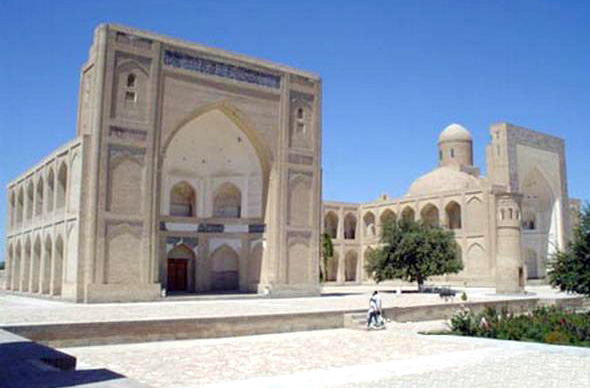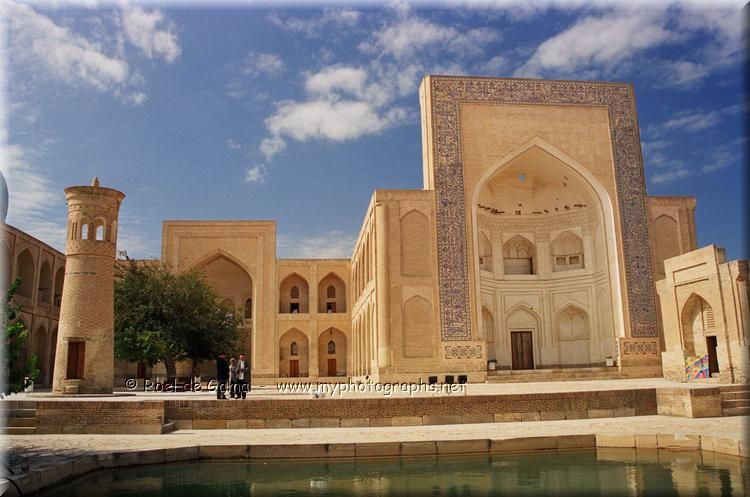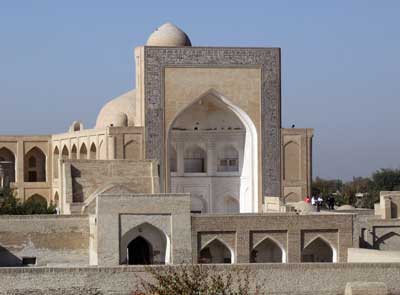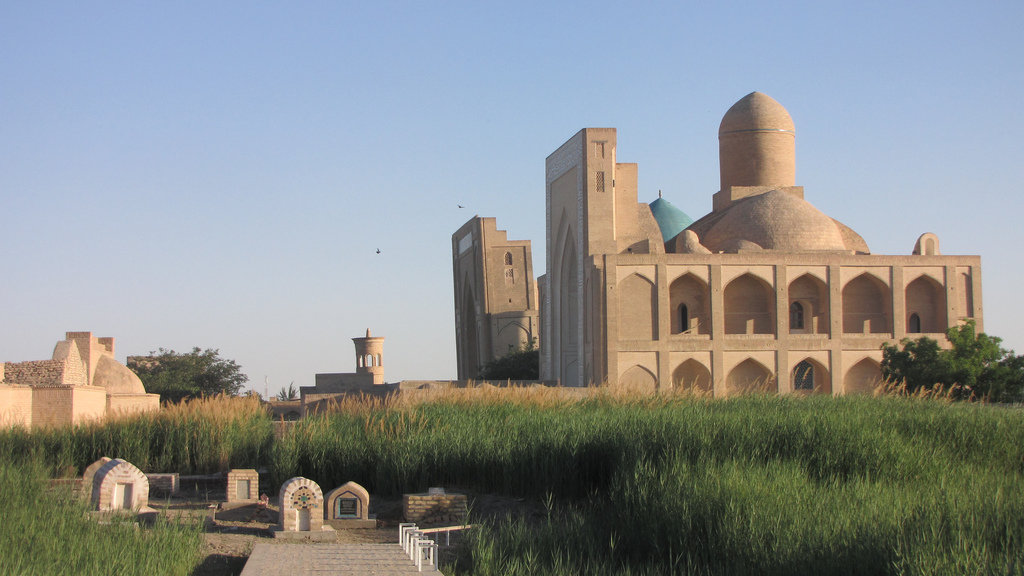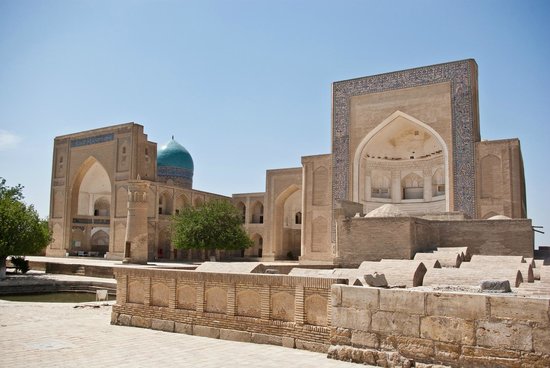Chor-Bakr is a country necropolis of sheikhs from Djuibar seyids. It is situated in Sumitan village—5 km to the west from Bukhara. Djuibar seyids occupied the major state posts in Bukhara since the Samanids. Appearance of the necropolis is connected with a tomb of Abu-Baqr Sa'ad, the founder of the dynasty. The tomb was the oldest part of the necropolis. The central architectural complex was formed in the second half of the 16th century under Abdullah-khan II and in connection with funeral of sheikh Khodja Muhammad Islam (died in 1563) and his son Khodja Abu Baqr Sa'ad (died 1589). Muhammad Islam was a successor of Mahdum-i Azam Kasani—the head of "naqshbandyyah".
Chor-Baqr Necropolis is like a "city of the dead" with streets, yards, gates and family dahmas with numerous gravestones. The central part is occupied by mosque, khanaka and madrasah. Front facades of the mosque and khanaka have portals with large arches, and side facades are formed by two circles of loggias. Their halls have domes on well-balanced drums and the interiors decorated with crossed arches and a "web" of netted "sails" and stalactites. In the 20th century a small minaret, imitating Kalyan Minaret was built on its central axis.

